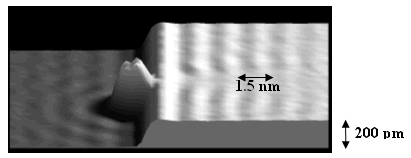Laws banning marriage between first cousins are based on outdated assumptions about a high degree of genetic risk for offspring and should be repealed, according to a population genetics expert.
In an opinion article published in the US open-access journal PLoS Biology, University of Otago Department of Zoology Professor Hamish Spencer and Professor Diane Paul, a Research Associate at Harvard's Museum of Comparative Zoology, argue that laws against cousin marriage are ill-advised.
"Neither the scientific nor social assumptions behind such legislation stand up to close scrutiny," says Professor Spencer. For example, a 2002 expert review of studies regarding birth defects in offspring of cousins found that the risk was much smaller than generally assumed, he says.
In 3.5 billion years, life on earth went from single microscopic cells to giant sequoias and blue whales. Scientists have now documented quantitatively that the increase in maximum size of organisms was not gradual, but happened in two distinct bursts "tied to the geological evolution of the planet," said Michal Kowalewski, professor of geosciences at Virginia Tech.
Over the last 60 years, ever-smaller generations of transistors have driven exponential growth in computing power. Could molecules, each turned into miniscule computer components, trigger even greater growth in computing over the next 60?
Atomic-scale computing, in which computer processes are carried out in a single molecule or using a surface atomic-scale circuit, holds vast promise for the microelectronics industry. It allows computers to continue to increase in processing power through the development of components in the nano- and pico scale. In theory, atomic-scale computing could put computers more powerful than today’s supercomputers in everyone’s pocket.
The heat created by human activities does not even amount to 1/10,000th of the heat that the Earth receives from the sun, say a group of researchers, and it may not be possible to get people to agree to burn fewer fossil fuels but covering parts of the Earth would offset that.
This radical plan to curb global warming and so reverse the climate change caused by burning of fossil fuels since the industrial revolution would involve covering parts of the world's deserts with reflective sheeting and they write about it in the January issue of the International Journal of Global Environmental Issues.
A groundbreaking study of popularity by a Michigan State University scientist has found that genes elicit not only specific behaviors but also the social consequences of those behaviors. According to the investigation by behavioral geneticist S. Alexandra Burt, male college students who had a gene associated with rule-breaking behavior were rated most popular by a group of previously unacquainted peers.
It's not unusual for adolescent rule-breakers to be well-liked – previous research has made that link – but Burt is the first to provide meaningful evidence for the role of a specific gene in this process. The study appears in the latest issue of the Journal of Personality and Social Psychology.
Scientists report that human gene mutations expressed in yeast cells can predict the severity of Batten Disease, a fatal nervous system disorder that begins during childhood. The new study published in Disease Models&Mechanisms (DMM) describes how the extent of changes in mutated cells paralleled the severity of symptoms seen in humans.
 Opioid Addicts Are Less Likely To Use Legal Opioids At The End Of Their Lives
Opioid Addicts Are Less Likely To Use Legal Opioids At The End Of Their Lives More Like Lizards: Claim That T. Rex Was As Smart As Monkeys Refuted
More Like Lizards: Claim That T. Rex Was As Smart As Monkeys Refuted Study: Caloric Restriction In Humans And Aging
Study: Caloric Restriction In Humans And Aging Science Podcast Or Perish?
Science Podcast Or Perish?









